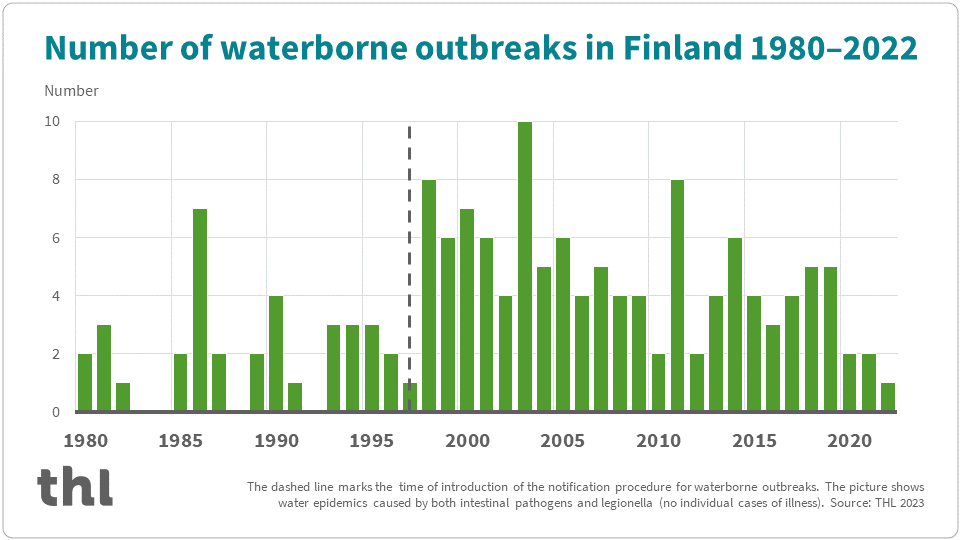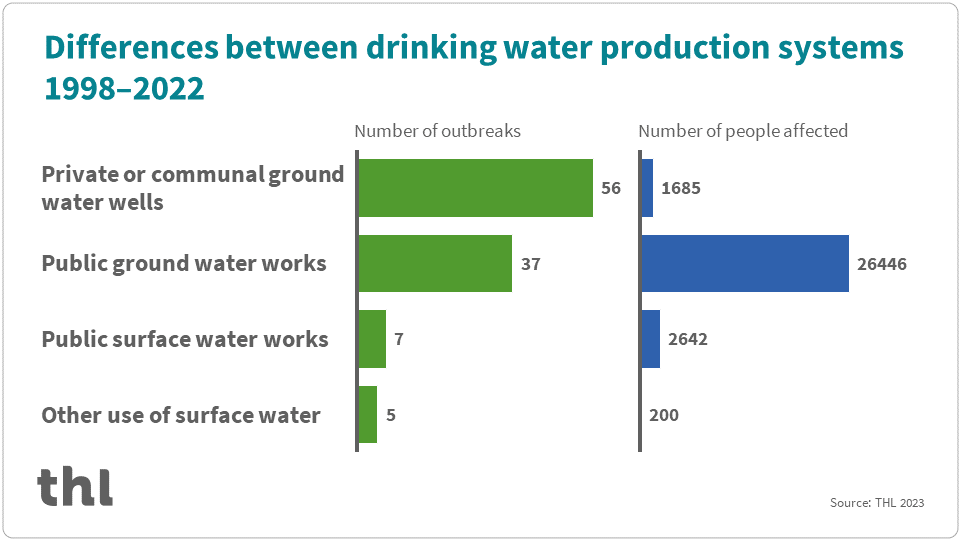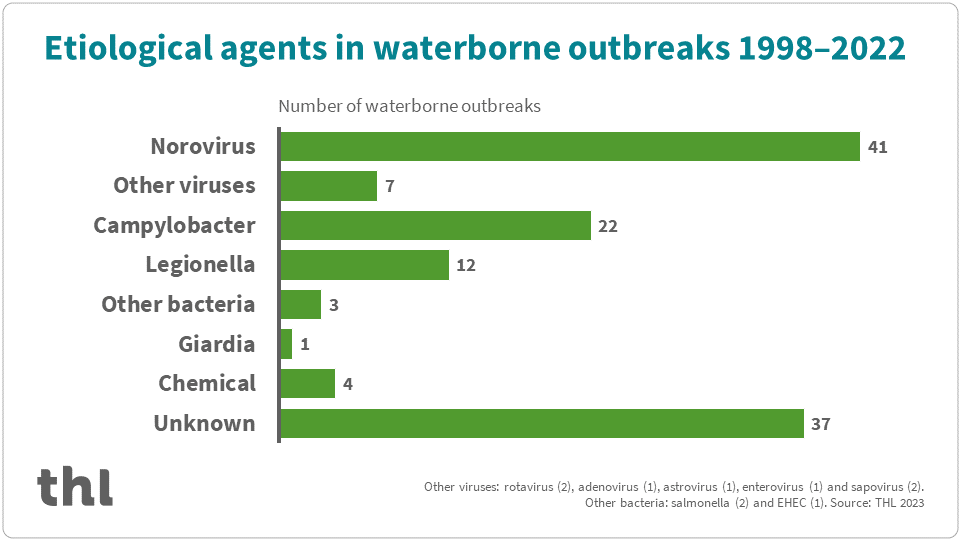Waterborne outbreaks
Waterborne outbreaks can be caused by
- Microbiological or chemical contamination of drinking or bathing water
- Airborne transmission of Legionella bacteria grown in the water supply systems.
The Expert Microbiology Unit at THL analyses pathogenic microbes capable of causing waterborne outbreaks and the related indicator microbes from water at all times.
Read more:
Information on waterborne outbreaks
The notification obligation concerning waterborne outbreaks, which entered into force in 1997, has resulted in more effective reporting of outbreaks. Prior to 1997, notifications on waterborne outbreaks were based on a voluntary procedure.

Causes of waterborne outbreaks
Most waterborne outbreaks in Finland are caused by the microbial contamination of groundwater, and outbreaks often occur at groundwater supplies maintained by small communities or water cooperatives. Some waterborne outbreaks have also been caused by the use of unpurified lake or river water as drinking water. However, most of the people who fell ill drunk water provided by municipal water works.
Aquifers can be contaminated by surface runoff, for example from floods, heavy rain, or melting snow, as well as by the entry of wastewater into groundwater or drinking water network. Broken water distribution networks can also lead to waterborne outbreaks.
Contamination of private or communal ground water wells cause most of the waterborne outbreaks in Finland. Majority of illness cases are associated with the use of drinking water supplied by the public ground water works.

Microbes causing waterborne outbreaks in Finland
The majority of waterborne outbreaks in Finland are caused by norovirus and campylobacter. These microbes are fairly persistent, migrate well in soil and water, and have strong pathogenicity.
The most widely known pathogens in buildings’ water systems are Legionella bacteria. They can cause illness, especially if they enter a person’s airways via water aerosols.





